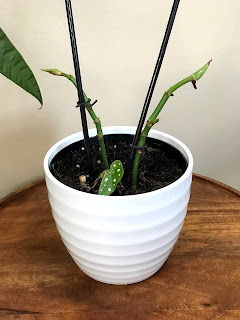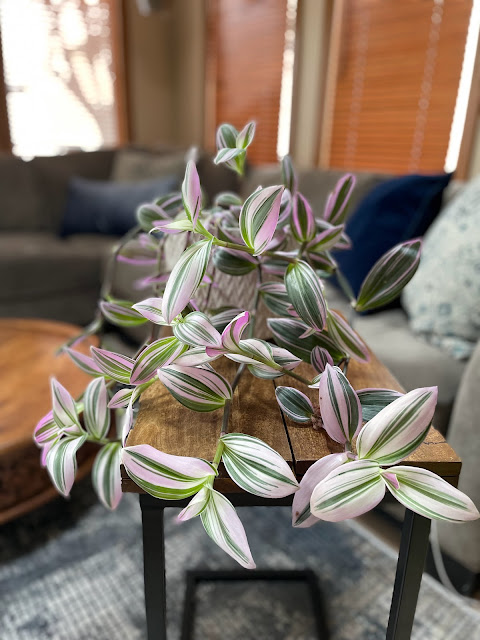The Polka Dot Begonia (Begonia Maculata)
I received a shipment of Polka Dot Plants (Begonia Maculata) which had dropped all their leaves due to the drastic change in temperature; from hot greenhouse to cold air conditioned store. Even though the plant was 'naked' (as you can see above) I decided to buy one and nurse it back to life. I've had it for a few weeks and it is now slowly beginning to strengthen. The small dotted leaf on the bottom of the photo is new growth.
I keep my Polka Dot Begonia in a room with lots of indirect sunlight. When I turn the AC on, I usually move the plant to a room that is warmer. I know this isn't feasible for everybody but do your best to keep the temperature steady.
I will update this post as I care for the plant and provide more information and pictures of its progress.
- True Name: Begonia Maculata
- Light: Bright, indirect light will promote strong growth and blooms. *Avoid direct sunlight.
- Water: Keep the soil generally moist, letting the top half inch of soil dry out between watering.
- Soil: A light houseplant potting mix is ideal. Add perlite if drainage is insufficient.
- Temperature: 65°F (18°C) to 86°F (30°C).
- Fertilizer: Balanced, water-soluble applied every 2-4 weeks when the plant is actively growing.
- Humidity: High
- Flowering: Bloom from spring to fall, produces clusters of white flowers with yellow centers.
- Pruning: Prune back at least twice per year to maintain compact growth.
- Propagation: Stem cuttings are easily propagated in soil or water.
- Re-Potting: Annual repotting in spring.
- Diseases and Pests: High humidity and overwatering can cause powdery mildew, botrytis, bacterial leaf spot, stem and root rot. Whitefly and mealybugs are sometimes a problem, but easily dealt with.
- Toxicity: Toxic to pets and people if ingested.
- Also Called: Polka Dot Plant, Spotted Begonia, Trout Begonia, Wightii, or Clown Begonia




Comments
Post a Comment